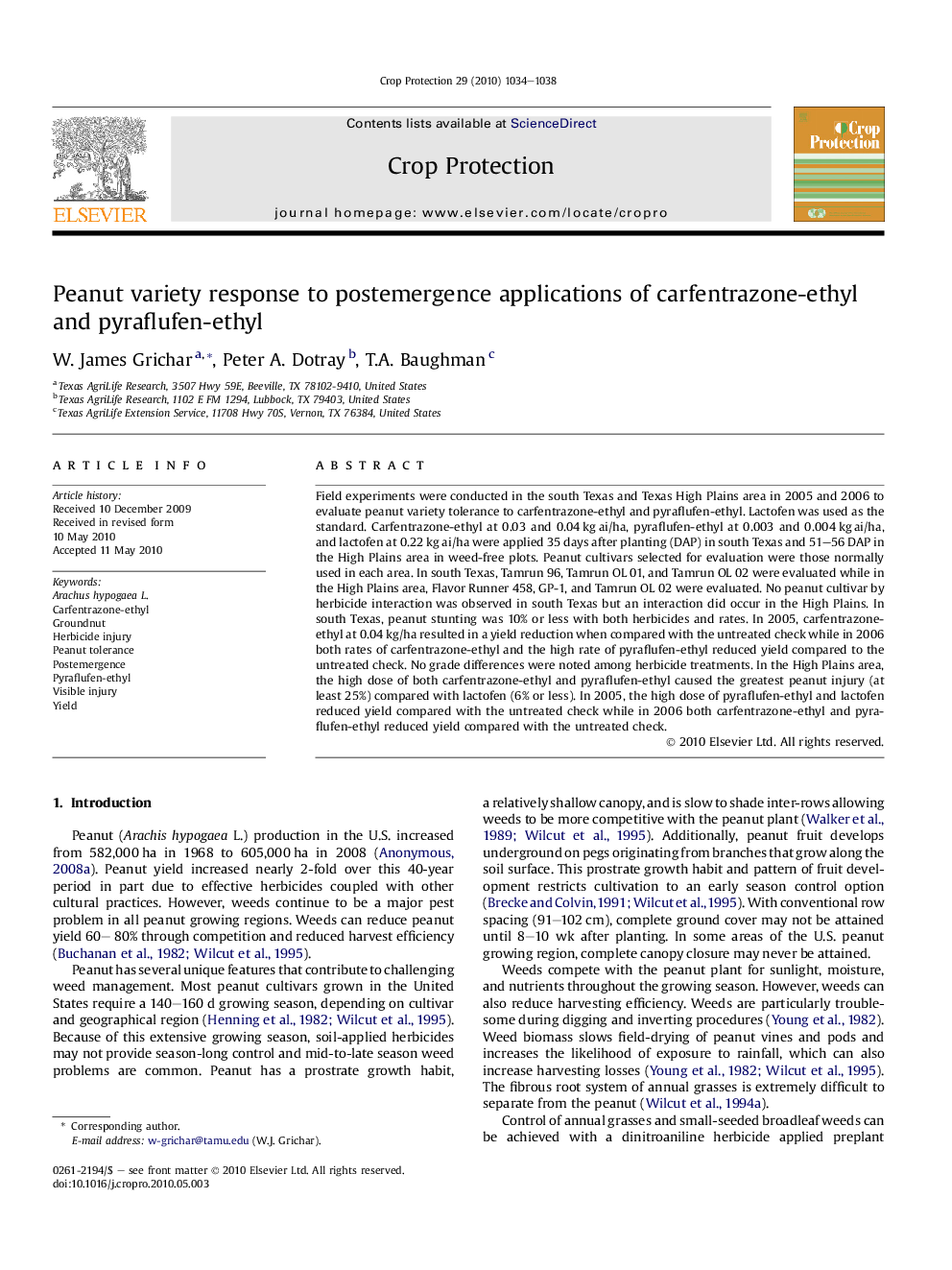| Article ID | Journal | Published Year | Pages | File Type |
|---|---|---|---|---|
| 4506701 | Crop Protection | 2010 | 5 Pages |
Field experiments were conducted in the south Texas and Texas High Plains area in 2005 and 2006 to evaluate peanut variety tolerance to carfentrazone-ethyl and pyraflufen-ethyl. Lactofen was used as the standard. Carfentrazone-ethyl at 0.03 and 0.04 kg ai/ha, pyraflufen-ethyl at 0.003 and 0.004 kg ai/ha, and lactofen at 0.22 kg ai/ha were applied 35 days after planting (DAP) in south Texas and 51–56 DAP in the High Plains area in weed-free plots. Peanut cultivars selected for evaluation were those normally used in each area. In south Texas, Tamrun 96, Tamrun OL 01, and Tamrun OL 02 were evaluated while in the High Plains area, Flavor Runner 458, GP-1, and Tamrun OL 02 were evaluated. No peanut cultivar by herbicide interaction was observed in south Texas but an interaction did occur in the High Plains. In south Texas, peanut stunting was 10% or less with both herbicides and rates. In 2005, carfentrazone-ethyl at 0.04 kg/ha resulted in a yield reduction when compared with the untreated check while in 2006 both rates of carfentrazone-ethyl and the high rate of pyraflufen-ethyl reduced yield compared to the untreated check. No grade differences were noted among herbicide treatments. In the High Plains area, the high dose of both carfentrazone-ethyl and pyraflufen-ethyl caused the greatest peanut injury (at least 25%) compared with lactofen (6% or less). In 2005, the high dose of pyraflufen-ethyl and lactofen reduced yield compared with the untreated check while in 2006 both carfentrazone-ethyl and pyraflufen-ethyl reduced yield compared with the untreated check.
